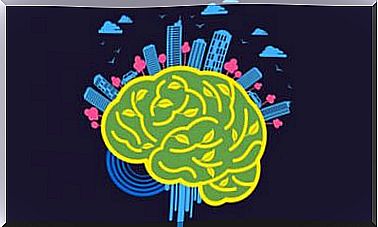The Dilemma Of Contradictory Messages

Have you ever thought about the difference between what you do and what you say? Why does a person seem to assert something that is the opposite of how they really feel? Contradictory messages are confusing. In this article, we talk about them from a psychological perspective.
What is a contradictory message? Read on to discover some keys to understanding this type of communication, including examples. In addition, you’ll see the results of some recent research on the topic, especially that of Gregory Bateson, a social scientist.

What are contradictory messages?
Contradictory messages are those that convey dissonant information from the same source. Therefore, they are paradoxical. The subject has been reviewed by several authors and trends:
- Psychoanalysts. They work by emphasizing the logic of what is contradictory, as they analyze statements that operate in an antagonistic or ambivalent way, some unconscious, others not.
- The Palo Alto School. According to Watzlawick, the concept of double bonding was first developed in this school as a communication guideline that leads to specific behavior in schizophrenia.
- Anzieu. He proposed that paradoxes can increase the recipient’s drive to self-destruction. Furthermore, they promote distrust and subvert the sense of truth and the subject’s being, as pointed out by Dr. Miguel Cherro Aguerre (p. 195).
Gregory Bateson, UK anthropologist and linguist, spoke of contradictory messages focusing on the systemic model. He mentioned the double-bind theory, emphasizing the association between members of a system. In addition, he developed it to explain the psychological causes of schizophrenia, a condition associated with communication patterns.
Double ties are communication dilemmas that arise from the antagonism between the content of different messages from the same source. Thus, they produce confusion in those who receive them.
However, this theory was revised and expanded, surpassing the limits of schizophrenia. Furthermore, it has been applied in other contexts and it is suggested, for example, that double binds are used by some as a means of control or manipulation.
Characteristics of contradictory messages
When it comes to contradictory messages, the sender can say that there will be bad consequences if the recipient does not perform a certain behavior. Furthermore, it provides abstract orders that contradict this mandate. Below, we list more characteristics of this type of message:
- Interaction. It can take place through any type of communication.
- Recurring pattern. It is not a one-off pattern, but it is repetitive.
- One or more messages. While there are usually two contradictory messages, there may be more.
- Power. In most cases, this happens between a person who represents authority and one who does not.
- Confusion. The person receiving the contradictory messages may feel confused and even blocked.
Communication patterns, both yours and others, influence your health . There are researchers who even claim that they can be found at the origin of some pathologies. This does not mean that they are the cause, but rather one of the factors that promote or trigger them (triggers).
Currently, there are several researches in this context. Rodríguez-Zoya, LG and Rodríguez Zoya, PG, in their article published in Keyword magazine , show how the processes of communication and social interaction can distort or hinder social representations and social communication in the double-binding theory.
In addition, there are other types of analyses, such as those focused on intervention proposals in situations of double bonding in teacher-student interactions. This idea is presented by García-Castro, Saneleuterio and García Ramos in the magazine Psicología y Educación: Presente y Futuro .

Consequences of contradictory messages
Anyone can receive contradictory messages. They are often quite toxic; keep in mind that they can be recurrent and have implicit content that confuses, blocks and can lead to:
- Insecurity. They confuse people, making them never know what to do, as they are torn between the two messages.
- Guilt. For feeling they didn’t do the right thing.
- Anxiety. Not knowing what to do and anticipating the future.
- Toxic relationships. After acting passively in the power situation without realizing that a double bond is being nurtured.
People who generate this type of message are also affected, because often their desires are not satisfied or their needs met. Similarly, for the double bond to happen, the relationship must be meaningful, as the disappointment of not meeting expectations can be deeper.
An example of this type of message is when a mother communicates to her child that she loves him while rejecting him in some way. Another example is when a person tells a partner, “do what you want,” or when you say you trust someone but keep a watchful attitude at all times.
Conclusion
In short, in these situations the very requirement that is manifested in the message makes its fulfillment impossible. Therefore, contradictory messages cause discomfort on both sides: for the person sending the messages, because it is very difficult for them to receive the response they want, and for the person receiving them, because they do not know what to do.









